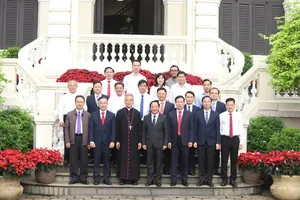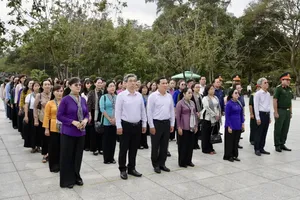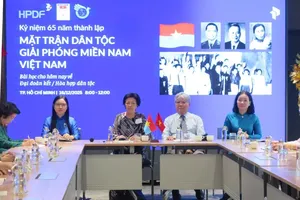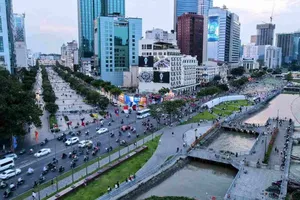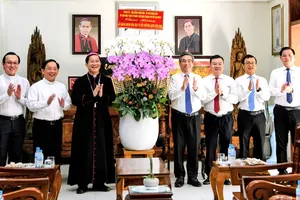
In the early days of July 2022, many different buses in Ho Chi Minh City were empty. At the September 23 Park Bus Station in District 1, even during the morning rush hour, which used to be crowded with customers, now there are only a few passengers. By the time of departure, many large buses with a capacity of 80 people carried only 3-5 passengers.
Buses to the Vietnam National University of Ho Chi Minh City in Thu Duc City such as the route No.50 departing from the Ho Chi Minh City University of Technology to the Vietnam National University - HCMC, the route No.52 from Ben Thanh Market to the Vietnam National University-HCMC, the route No. 8 from the District 8 bus station to the Vietnam National University- HCMC, the route No.150 from the Cho Lon bus station to the Tan Van intersection were always full of students and teachers going to schools; accordingly, a bus departed every 10-15 minutes to meet the travel needs of a large number of passengers whereas they are now seeing several passengers; especially, buses are less crowded on weekends.
According to statistics of the HCMC Management Center of Public Transport (MCPT) under the municipal Department of Transport, in the fourth quarter of 2021, the volume of bus passengers only reached an average of 6.1 passengers per trip and around 17.5 passengers a trip in the second quarter of 2022. The Bus Transport Enterprise currently has over 20 bus routes, accounting for 16 percent of the city's bus market share.
According to Mr. Nguyen Duy Khanh, Director of the Enterprise, the unit has resumed operation on 80 percent of the assigned routes, but the number of passengers is only 50 percent compared to before the epidemic, an average of about 28 passengers a trip.
Mr. Phung Dang Hai, Chairman of the Board of Directors of Ho Chi Minh City Transport Cooperative Union - the largest bus business in the city, said that the number of passengers has decreased by 70 percent. Before the epidemic, many bus routes had an average of 105 passengers per trip, but now only 30 people per trip.
Many city dwellers faced difficulties in using buses as a means of transport to school or work. Before the epidemic, each bus trip was on average about 15 minutes apart, but now it is for more than 20 minutes and even nearly 30 minutes. Passengers have to go to the waiting station earlier and wait longer to take the right bus route.
In addition, passenger Duong Thi Thanh Thuy in Tan Binh District complained that now every 10 trips, all eight trips are delayed. She said that currently, each bus ticket is about VND 7,000 one-way trip. To go from home to work, she has to change routes once, four trips per day; subsequently, she spends nearly VND30,000 a day. Ms. Thuy said that if there was a bus station closer to her house with a cheaper fare, she will definitely choose the bus as the main means of transportation to work.
Mr. Phung Dang Hai further analyzed that at peak hours, five out of seven trips are stuck in traffic, arriving late compared to the specified time. However, this situation appeared a long time ago, a few years before the epidemic occurred, but the authorities did not have a solution to handle it. Passengers, therefore, began not to take a bus. Then, due to inefficient operation, many bus lines were forced to suspend operations or trips; therefore, more people decided not to travel by bus. It's a vicious circle!
According to the HCMC Department of Transport, in the period 2002-2008, buses grew at an average rate of 49 percent per year. In the 2009-2013 period, the growth was not stable, with an average of 6.72 percent annually. From 2014 up to now, it has started to decline because of an increase in private vehicles more than the investment in infrastructure, leading to buses always being stuck in traffic, not ensuring the route.
The Ho Chi Minh City Department of Transport is studying to organize priority lanes for buses to ensure the speed of operation and punctuality of buses. It is expected to limit personal vehicles in central areas such as Districts 1, 3, 5, 10, Thu Thiem new urban area, Phu My Hung urban area and will develop and expand, spreading to neighboring areas when transport infrastructure and public transportation develop more.
Bus businesses have just sent their submission to the People's Committee of Ho Chi Minh City to help them solve difficulties with subsidized bus operations in the city. Accordingly, businesses recommended that the city authorities should base on the actual operation situation.
In addition, the city has a mechanism to encourage transport companies to invest in environmentally friendly green buses, whereby, in the next bidding packages, if the contractor uses a clean fuel vehicle, an additional fee will be added to the cost difference between vehicles using clean fuel and vehicles using diesel fuel.
The HCMC Department of Transport said that the D4 electric bus is part of the city's overall bus system and is subsidized by the state like other regular bus routes. Electric buses help eliminate air pollution as they are not powered by fossil fuels; thereby, helping to reduce environmental pollution.
In the coming time, Ho Chi Minh City will have three new electric bus routes including Vinhomes Grand Pask to the new Eastern bus station, Vinhomes Grand Pask to Tan Son Nhat airport, and the Vietnam National University – HCMC to the new Eastern bus station.

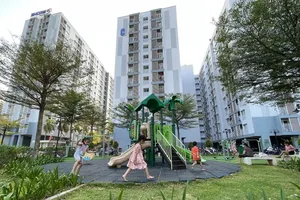
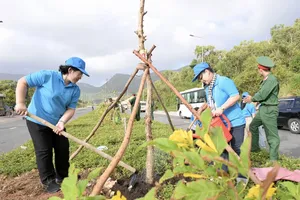
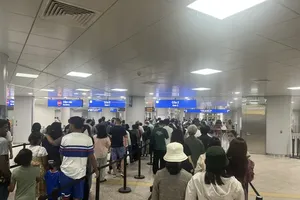
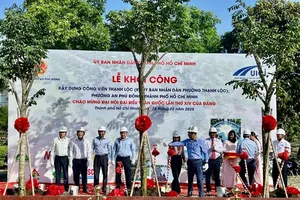

)

